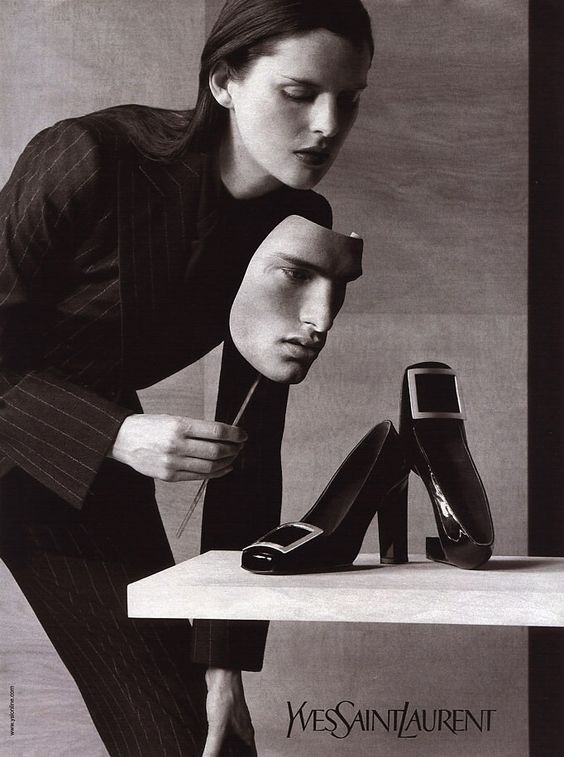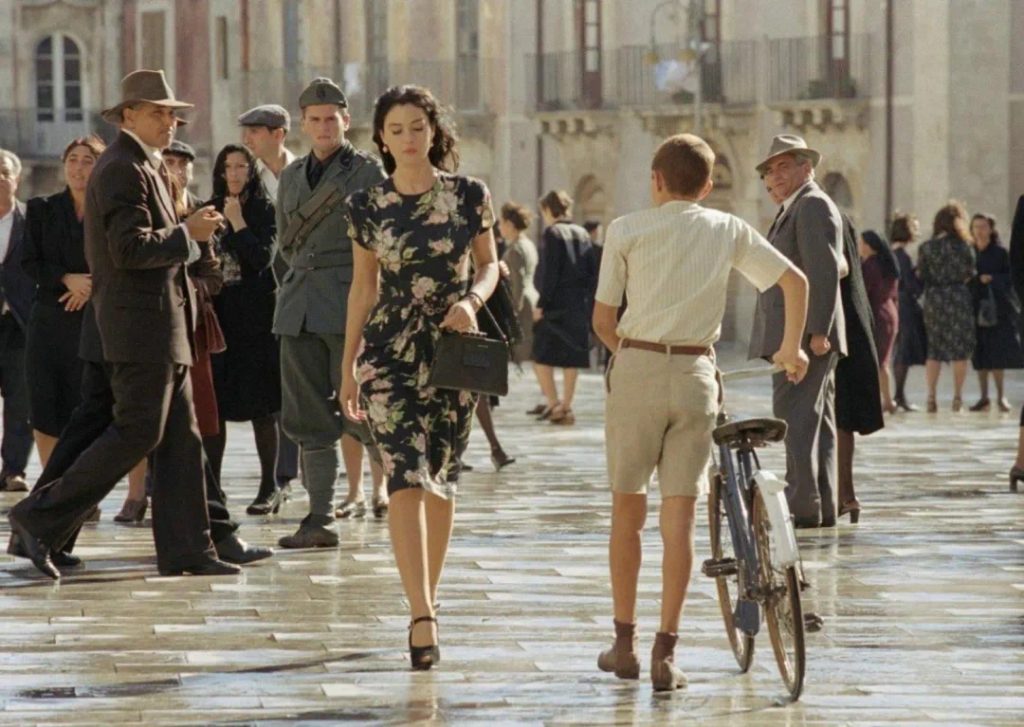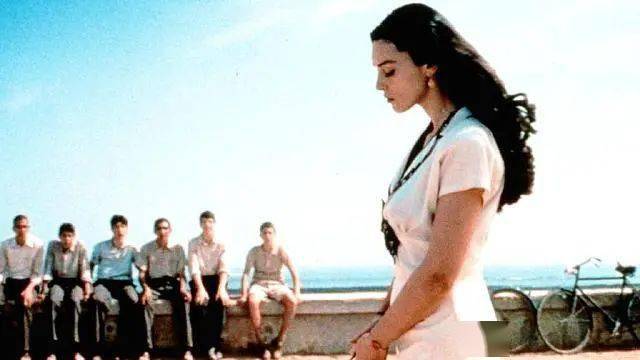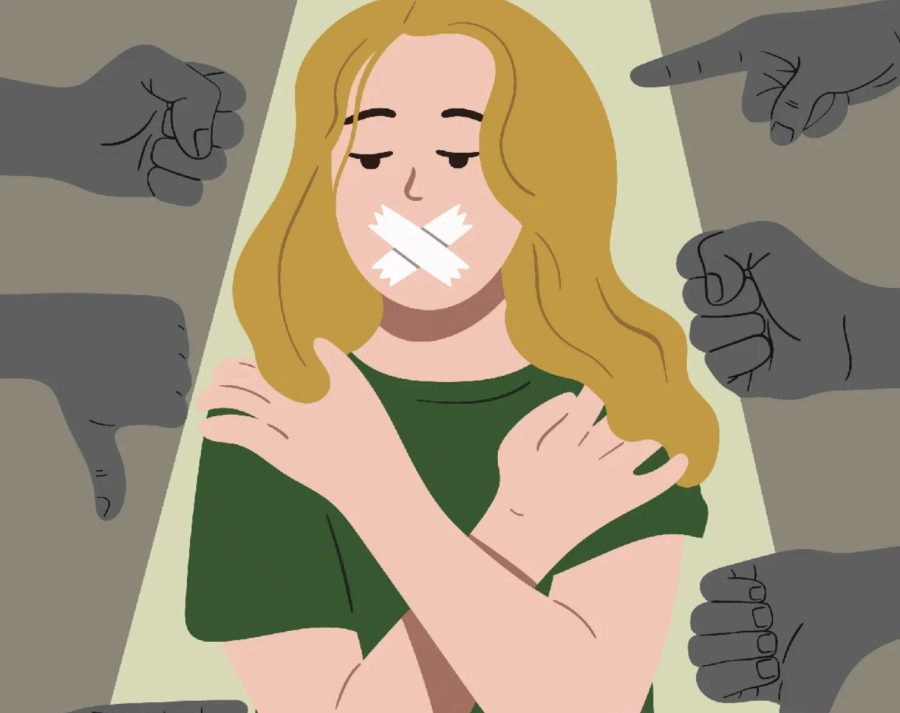
“Gaze” is different from seeing and appreciating. If “looking” is the random flipping of a magazine, “gaze” involves attention, emotion, and even desire, like reading a book. But what makes this book special is that it makes the object of the gaze feel that it is being read.
The “male gaze” was first proposed by feminist film theorist Laura Mulvey(1975) in her article Visual Pleasure and Narrative Film, which describes how women are portrayed as objects of desire for male audiences in visual culture, especially in film, advertising and art.
This concept reflects the gender power relationship in the current society, which is not only the review of women by men but also the gaze of those in a disadvantaged position, reflecting the inequality of gender power in the real world.
“The male gaze portrays women as objects of amusement for heterosexual male viewers as if they are perpetually under the watchful eye of the male gaze.”
Laura Mulvey
Typical Case
In a movie, the director determines what you can see through the camera’s “eyes” and you can only see the world in the movie according to the director’s meaning. But if the film shows women primarily through male eyes, turning women into a landscape for men to enjoy, that’s the “male gaze”.
For example, in Malèna, Malèna is often the object of male desire. From young Renato to the other men in town, Malèna is constantly being stared at.

And this gaze does not come from other people’s understanding or respect for her, but only based on her beautiful appearance and desire and fantasy. This is also the core of the “male gaze” theory, that women are objectified in visual culture and become the source of male visual pleasure.

However, the movie attributes Malèna’s suffering to her beauty, which is not objective. Beauty is a concept that is evaluated, it is not controlled by the subject. What can directly lead to “sin” is a thematic attribute, such as violence, wickedness, extreme selfishness, etc.
There are also South Korean girl groups and various appearance-level anchors in short videos that show their bodies or specific behaviors to attract viewers, especially male viewers, to become the object of their scrutiny, appreciation and even objectification.
In this process, the image of women is often shaped and displayed in a way that conforms to male desires, emphasizing sexy, cute or weak traits to cater to the audience’s aesthetic preferences.
How to Challenge the Male Gaze
The true way to refuse to stare is to face the gaze, acknowledge yourself from the bottom of your heart, and pay attention to your needs. Because any one of your shapes has an audience, it may become the material of the other party’s fantasy. Every human body is the same, whether female or male, but made up of a mass of flesh and bones, and all feelings, emotions and desires are products of consciousness (Clemens E. Benda, 1959).
It is our right to wear the right clothes for the right occasion and we should not be ashamed of it. So don’t be afraid to gaze, and don’t put yourself in the position of being scrutinized. If you want to avoid becoming the prey, you must have the eye of the hunter.
References:
- Benda, C.E., 1959. The linguistic basis of consciousness. ETC: A Review of General Semantics, pp.343-355.
- Mulvey, Laura (1975) Visual pleasure and narrative cinema. Edition 1. Screen.
- Film Malena on Wikipedia: https://en.wikipedia.org/wiki/Mal%C3%A8na_(film) (Online accessed December 2, 2024).
- The filmmaking perspective: https://filmstro.com/blog/point-of-view-in-filmmaking-what-is-it-and-why-is-it-important/ (Online accessed December 2, 2024).


This article is very meaningful! Through the analysis of movies and popular culture, it reveals how male gaze shapes the image of women in the media, prompting people to reflect on gender biases behind the content they encounter in daily life. I also really like the idea mentioned in the article about how to break this gaze through self-awareness, which is very inspiring.
Hi LIUYANG, your blog clearly explains the concept of the ‘male gaze’ and demonstrates how the theory has manifested itself in different eras and cultures through the classic example of ‘The Beautiful Legend of Sicily’ (Malena) and modern phenomena such as the representation of women in South Korean girl groups and short videos in a very engaging way.
Your distinction between ‘gazing’ and ‘watching’ is impressive and provides an important context for understanding the depth of this concept, demonstrating your precise grasp of the theory.
In particular, your analysis of Malena vividly visualizes the core idea of the ‘male gaze’ by unpacking the perspective of the male characters and the process of objectification of the female characters.
This approach not only makes the theory more accessible, but also highlights your deep insights into visual culture and gender power relations. At the same time, your use of short videos and pop culture as modern examples extends the applicability of the theory, and this integration with contemporary practice is very much in line with the course objectives.
However, I think your concluding section could be further deepened. You mention ‘confronting the gaze and recognizing the self’, which is a powerful proposition, but perhaps it would be useful to explore how this entrenched perspective can be challenged through the arts, the media or education, for example, how female directors can break the tradition of the ‘male gaze’ through the language of film. You could also delve more deeply into the potential impact of the ‘male gaze’ on men – does it similarly shape men’s self-perception and behavioral patterns? Overall, your blog not only demonstrates a deep understanding of the ‘male gaze’, but also combines a rich and concrete case study with confrontational strategies that are both theoretical and practical. It is a thought-provoking and academically valuable piece of work!